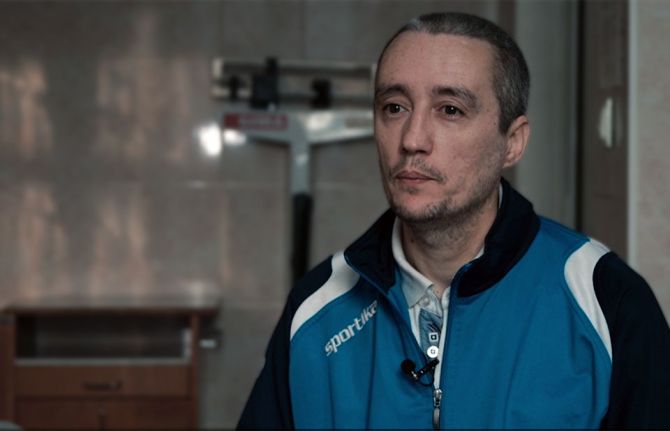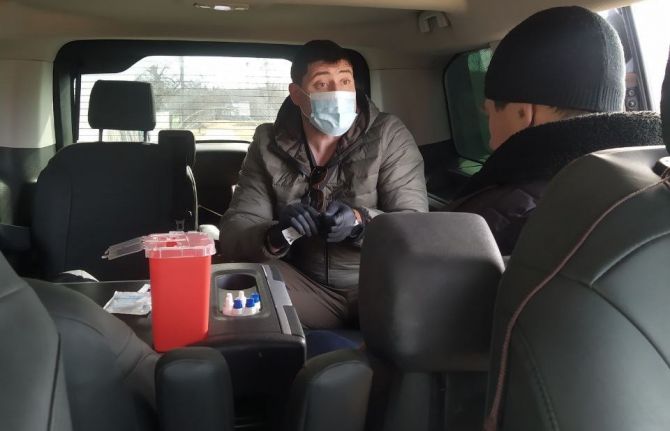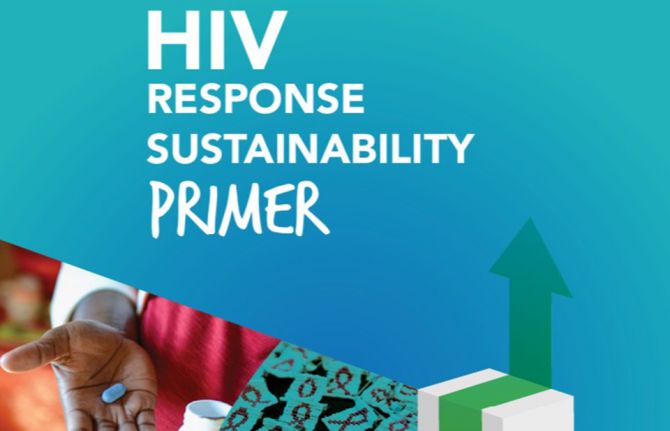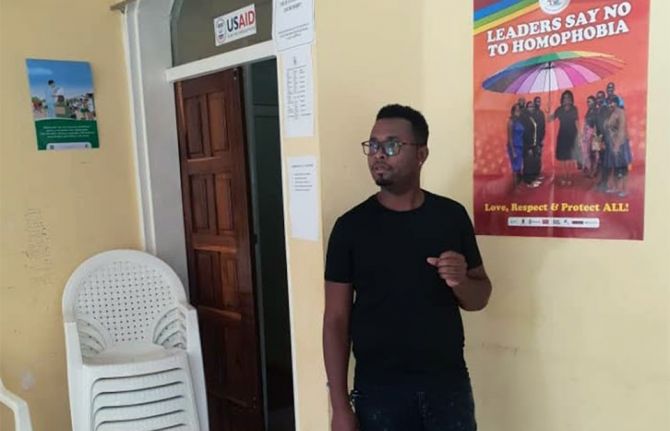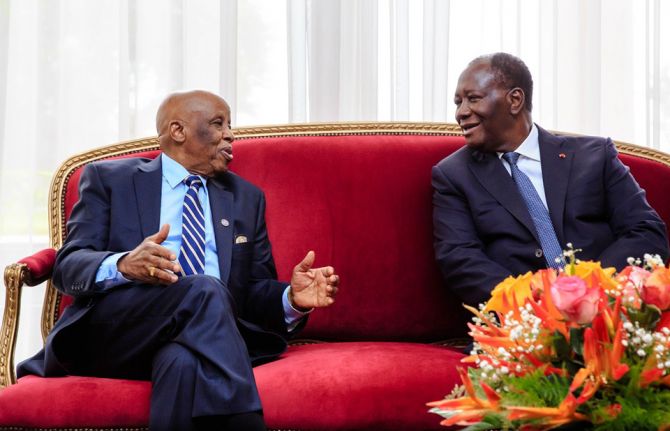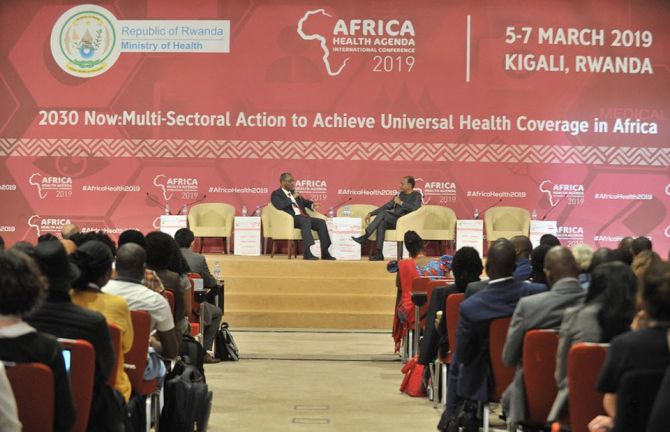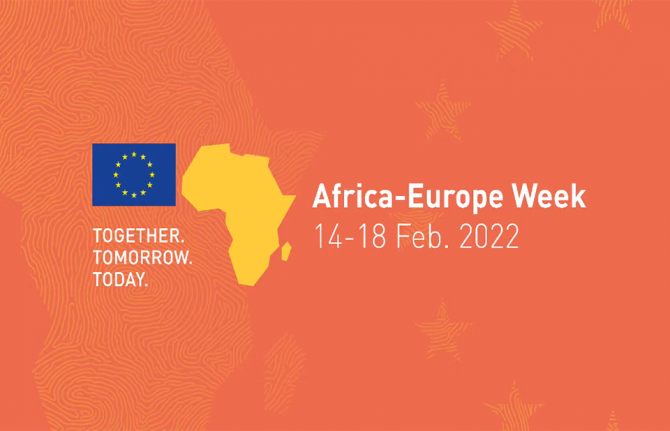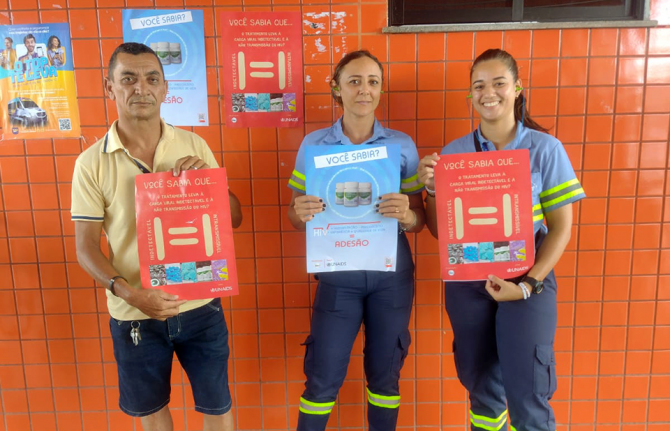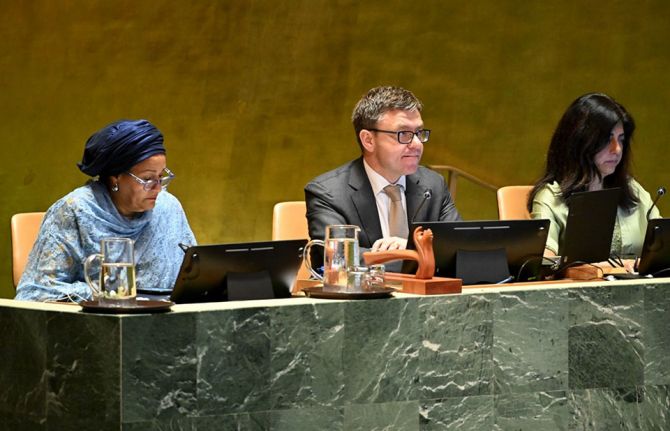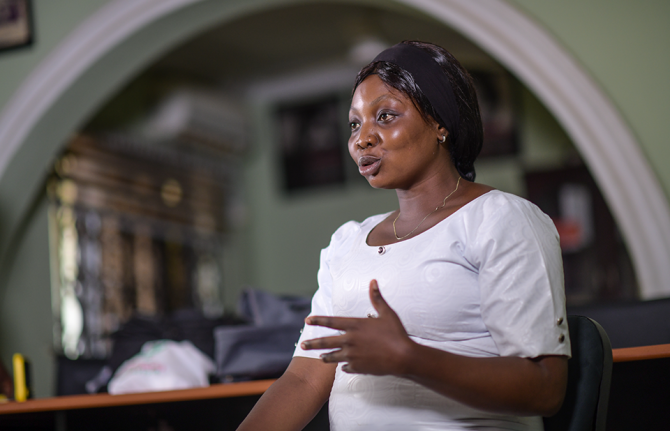
Feature Story
“Overwhelming and Inspiring”
09 octobre 2007
09 octobre 2007 09 octobre 2007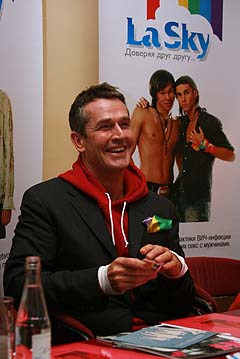
Rupert Everett, the film and theatre actor
(My Best Friend’s Wedding, Another Country), and
Special Representative of UNAIDS visited Moscow
and St Petersburg 23 – 26 September, to learn
more about AIDS and tuberculosis in Russia and
to help raise awareness about these two important,
inter-linked diseases.
Rupert Everett, the film and theatre actor (My Best Friend’s Wedding, Another Country), and Special Representative of UNAIDS visited Moscow and St Petersburg 23 – 26 September, to learn more about AIDS and tuberculosis in Russia and to help raise awareness about these two important, inter-linked diseases.
“I’m very grateful to everyone in Moscow and in St Petersburg who took the time to meet and share their experiences with me,” said Mr Everett at the end of his visit.
“It has been a very busy three days: overwhelming and inspiring. Denial, pre-existing stigma and prejudices are nourished by the presence of HIV and TB in society as a whole. These are powerful forces that act as roadblocks on the journey towards an effective response to the spread of HIV and TB.
”Rupert Everett has been active in the AIDS response for many years, but this was his first official trip with UNAIDS since his appointment as Special Representative in December 2006.
UNAIDS regional director, Bertil Lindblad, welcomed Rupert Everett’s visit as a way to help focus on key areas of the Russian response.
“People in the public eye like Rupert Everett can inspire and motivate others to unite against AIDS.
”During the first part of his visit, he visited the Republic Clinical Hospital for the Treatment of Infectious Diseases just outside St. Petersburg. The centre treats children who have been abandoned and / or are living with HIV.
Dr. Evgeny Voronin, the Chief Physician of the hospital and Head of the National Clinical Centre for Children’s AIDS, explained:
”There are about 2000 children in Russia today who are HIV positive. The main problem is integrating these children into regular social life and providing them with qualitative education so they can fully develop,” he said.
In St, Petersburg Everett and the UNAIDS team met with staff and outreach workers of “LaSky”, a project supported by PSI (Population Services International), the Global Fund and the Ford Foundation, providing information and prevention services among men who have sex with men. The meeting was held in one of the most popular gay clubs in St. Petersburg and the group shared their experiences and challenges in reaching out to young gay men in 10 regions of Russia.
At St Petersburg City Infectious Hospital N30, Rupert Everett met doctors and learned about working with injecting drug users who are living with HIV. He also heard from representatives of the non-governmental organization Humanitarian Action and other activist groups who provide HIV prevention services as well as support for people living with HIV. Humanitarian Action also arranged a field visit for Everett to one of its outreach sites where prevention services, including needle exchange and counseling, are provided in a fully equipped bus serving several parts of St. Petersburg.
The number of officially registered people living with HIV in Russia in May 2007 was approximately 386,000. However it is widely believed that the actual number could be up to 1.1 million.
Traveling on to Moscow, Everett met with representatives of a network of people living with HIV, NGO practitioners, UNAIDS Cosponsoring agencies and volunteers.
HIV and tuberculosis are closely linked, each worsening the impact of the other and disproportionately affecting the poorest and most marginalized people in society. According to the World Health Organization, TB is the leading cause of death in people living with HIV in Russia, accounting for 59% of such deaths in 2006. Most of those who died were between the ages of 25 and 34.
In Moscow, Mr Everett visited the Centre for TB treatment at the Moscow Clinical TB Hospital N7, met with staff and children being treated at the hospital as well as representatives of the Ministry of Health TB Programme and WHO which supports comprehensive TB activities in Russia.
At the end of his visit, the actor spoke of his hopes to develop his support:”I hope that UNAIDS can continue to play an active part in the future to bring the government, the NGOs and the advocacy groups closer together in a united response to AIDS and TB.”
Links:
Read more about UNAIDS' Special Representatives
Related

Feature Story
Business and AIDS
03 octobre 2007
03 octobre 2007 03 octobre 2007
Business not only has the resources but it has long
understood the importance of investing for the
future – and it is precisely this long-term horizon
that needs to be brought into the global response
to the epidemic.
“Business is fully equipped to play a major role in the global response to AIDS,” said UNAIDS Executive Director at a special symposium on International visions on the future of health care in resource-poor settings organized by Heineken international in Amsterdam on Wednesday 3 October.
In a video message to the symposium, Dr Piot highlighted the power of businesses to reach millions of people on AIDS issues, starting with HIV programmes in the workplace. Dr Piot called for an increasing involvement of the private sector in strengthening health systems, establishing innovative initiatives for the general public by devoting business expertise and outreach, building public-private partnerships and financing all these efforts in the long-term.
“Business not only has the resources but it has long understood the importance of investing for the future – and it is precisely this long-term horizon that needs to be brought into the global response to the epidemic,” he said.
Heineken has already showed a strong commitment to responding to AIDS through commitment from leadership and implementation of HIV programmes worldwide. “As a result of the AIDS epidemic in Africa, Heineken has upgraded its own clinics by enhancing the health care provided and by attracting good quality medical staff. This has resulted in relevant infrastructure, which provides health care to approximately 30,000 people in Africa alone, including employees, partners and children,” the company says on its web site.
The Heineken Symposium was organized to encourage dialogue between companies and external partners such as UNAIDS on how better business can become involved in health care and related activities. Other speakers at the symposium included Dr. Henk Rijckborst Health Affairs Director, Heineken International, Professor Joep Lange from the University of Amsterdam, Bert Koenders, Holland’s Minister for Development Cooperation, Professor Gilbert Lenssen President European Academy of Business in Society and Jean-François van Boxmeer, Chairman/CEO Heineken N.V.
In his video message, Dr. Piot underlined UNAIDS’ commitment to deepening and expanding work and partnerships with the business sector and said that it was critical to look way beyond the health system and health care when dealing with AIDS, as most HIV prevention activities are not of a medical nature.
Dr Piot stressed that business response to AIDS will require sustained leadership at the CEO level and beyond, sustainable resources for a long-term AIDS response and the introduction of increasing creative public-private partnerships.
“AIDS will be with us for generations to come and in many regions of the world its impact on business is likely to grow. At this juncture of the AIDS epidemic is essential that the business sector become a fully engaged partner for the long term,” Dr Piot concluded.
Links:
Watch Dr Piot’s video message at the Symposium
Visit the Heineken Symposium web site

Feature Story
AIDS focus at ASEAN Summit
01 octobre 2007
01 octobre 2007 01 octobre 2007
Asia has the second largest number of people living with HIV in the world and its share of the global epidemic is increasing. Faced with such challenges, countries across the region are stepping up commitment to fight AIDS and putting AIDS and its effects at the centre of many political and socio-economic discussions.
At the 12 th Summit of the Association of South East Asian Nations (ASEAN), that is meeting in Cebu, Philippines from 10-15 January, the issue of AIDS will be high on the agenda as the ten participating Heads of State consider AIDS at an extraordinary session to be held on Saturday 13 th January.
According to latest estimates, the ASEAN region – which includes Brunei Darussalam, Cambodia, Indonesia, Lao PDR, Malaysia, Myanmar, Philippines, Singapore, Thailand, Viet Nam -shows the most severe epidemics within Asia. At their 7 th Summit held in Brunei Darussalam in November 2001, the ASEAN Heads of State and Government passed a resolution to convene the “Special Session on HIV and AIDS” in conjunction with the 12th ASEAN Summit in 2007, to signal ASEAN’s commitment in combating AIDS and to give impetus to regional responses in taking urgent action.
At the Session, the ASEAN Heads of State will discuss AIDS, its effects and the regions response, and will consider a special report on the epidemic from the Executive Director of the Joint United Nations Programme on HIV/AIDS (UNAIDS). The report is intended to brief the leaders on AIDS epidemics globally and in the region, and the challenges AIDS presents. This is the first time an external body has been invited to report to the Heads of State Summit on AIDS.
Following the Special Session, the ASEAN Heads of State are expected to adopt a Declaration on AIDS, affirming their commitment to prioritize, lead and strengthen national AIDS responses. “[This Declaration] will form part of the permanent history and lexicon of ASEAN,” said ASEAN Spokesperson, Philippine Ambassador to Malaysia Victoriano Lecaros.
Representing UNAIDS Executive Director Dr Peter Piot, UNAIDS Deputy Executive Director Deborah Landey will attend the ASEAN Summit.
Related
 Thailand’s Mplus: HIV services delivered in style
Thailand’s Mplus: HIV services delivered in style

13 décembre 2022
 Preventing transmission and tackling stigma: The power of U=U
Preventing transmission and tackling stigma: The power of U=U

12 décembre 2022

Feature Story
UNAIDS pledges to help ‘make the money work’ for Global Fund
27 septembre 2007
27 septembre 2007 27 septembre 2007
As world Leaders joined in Berlin, Germany on Thursday 27 September to announce their financial pledges to the Global Fund to Fight AIDS, Tuberculosis, and Malaria for the next three years, UNAIDS Executive Director Peter Piot underlined the United Nations commitment to “make the money work – to help make Global Fund grants as effective and beneficial as possible on the ground.”
“UNAIDS is an important partner to the Global Fund, providing essential support for its work,” he said.
In his statement to the participants of the Global Fund’s replenishment conference, taking place in Berlin, Dr Piot emphasized the urgent need for an adequately funded large-scale AIDS response now, in order to avoid even higher costs in the future.
“There are so many challenges facing the developing world that some may ask why fighting HIV is a priority,” he said. “The answer is threefold – the cost in lives lost has been tremendous, the cost of saving lives will only increase as time goes on without an adequate response, and, finally, responding to AIDS is essential in order to address every other development issue worldwide.”
“The United Nations’ technical expertise, its experience coordinating with countries, and its understanding of working with civil society are key contributors to the work of the Global Fund,” he added.
Dr Piot’s intervention came during the pledging session, where the head of each delegation addressed donors prior to their pledge announcements.
Merkel: ‘Prioritize health, increase coordination’
Opening the day’s events, German Chancellor Angela Merkel spoke in front of an audience of heads of country delegations from around the world, including the United States, United Kingdom, Russian Federation, Australia and the European Commission. Also present were delegates from multilateral organizations, including UNAIDS and the World Health Organization, as well as donors such as (PRODUCT) RED.
In her remarks, Chancellor Merkel urged countries around the world to prioritize tackling the global HIV, tuberculosis, and malaria pandemics. She placed particular emphasis on the need for to increase coordination between bilateral and multilateral programmes, and expressed satisfaction about efforts such as the International Health Partnership, in which UNAIDS is a partner, launched on September 5 in London.
Merkel also called on business leaders in Germany and other countries to establish a new tradition of philanthropy in order to contribute to the Global Fund and other international health efforts. To that end, representatives from leading German businesses met on Wednesday with Global Fund Replenishment Chair Kofi Annan to discuss novel approaches to supporting global health programmes, including the Global Fund.
Other speakers at the opening meeting were Global Fund Executive Director Michel Kazatchkine, Board Chair Rajat Gupta and Vice Chair Elizabeth Makata, and German Development Minister Heidemarie Wieczorek-Zeul. The event was opened by former United Nations Secretary-General and Replenishment Chair Kofi Annan. In his statement, Annan praised the record of the Global Fund, saying that after five years, “we have a fund that is highly successful in spending money to save lives” and that “money channeled through the Global Fund is money invested effectively.”
Since its founding in 2002, more than 60 governments, private foundations, corporations and individuals have contributed more than US$ 11 billion to support the Global Fund. The Global Fund's total funding need for 2008-2010 is US$ 12-18 billion, necessary to support existing grants and fund critical new programmes to fight AIDS, tuberculosis and malaria. Delegates are gathering in Berlin from 26-28 September for the second round of the Global Fund’s biennial meetings to raise funds for its programmes to provide essential HIV, tuberculosis and malaria services in developing countries.

Feature Story
Financial resource requirements for AIDS
26 septembre 2007
26 septembre 2007 26 septembre 2007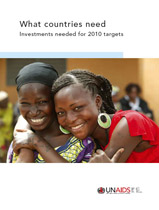
The report* puts forward three
different approaches to financing
the AIDS response
UNAIDS has released a new report on the estimated financial resources required for the AIDS response. The report, entitled Financial Resources required to Achieve Universal Access to HIV, Prevention, Treatment, Care and Support* puts forward three different approaches to financing the AIDS response including:
Scaling-up at current rates. By following the current rate of annual scale-up, the estimated resource requirements would be between US$ 14 - 18 billion in 2015, this amount would provide antiretroviral treatment for 8 million people in that year and the prevention, care, support and social mitigation targets would be far from Universal Access levels.
Universal Access by 2010. This approach envisages significant increases in available resources and an urgent and dramatic scale-up of coverage in all countries. Following this approach would provide antiretroviral treatment for 14 million people by 2010. To achieve this, the annual resource requirements would rise to between US$ 32 - 51 billion in 2010 and between US$ 45 - 63 billion by 2015. Prevention, care, support and social mitigation targets would also reach the targets consistent with universal access in 2010.
Phased scale-up to universal access by 2015. This approach assumes different rates of scale-up for each country based on current service coverage and capacity, with the achievement of different programmatic targets (prevention, care, treatment, support and social mitigation) at different times and the achievement of universal access by all countries by 2015. The approach would require between US$ 41 - 58 billion in 2015.
The estimates provided in the report, developed for 132 low- and middle-income countries, were based on the type of epidemic and nationally established targets using the latest available data.
*The 2008 version of the report is under preparation and will include revised resource needs estimates based on the latest downwards adjustments of the global prevalence data from the 2007 AIDS Epidemic Update.
Links:
Download report - Financial Resources Required to Achieve Universal Access to HIV Prevention,Treatment, Care and Support
Read report summary ( en | fr | ru | es )
Read methodology documents
Right Hand Content
Media Kit:
Report summary* ( en | fr | ru | es ) *The 2008 version of the report is under preparation and will include revised resource needs estimates based on the latest downwards adjustments of the global prevalence data from the 2007 AIDS Epidemic Update.
Fact Sheet: Universal Access
Fact Sheet: Summary of the methodology used to estimate the financial resources required for the global AIDS response
Related Links:
Universal Access
Financial Tracking
Epidemiological Estimates
Related Documents:
Critical Review of Costing Models to Estimate Resource Needs to Address Global HIV and AIDS
Novel and Alternative Approaches to Estimate Global Resource Needs to HIV and AIDS
Improving parameter estimation, projection methods, uncertainty estimation, and epidemic classification
Practical guidelines for intensifying HIV prevention
Towards Universal Access: Scaling up priority HIV/AIDS interventions in the health sector
ART for HIV infection in adults and adolescents
Related stories:
Latin America countries discuss AIDS spending (September 2007)
Funding estimates for AIDS research and development (August 2007)
New report shows increase in AIDS financing but funding still falls short (June 2007)

Feature Story
Global Fund Replenishment meeting opens in Berlin
26 septembre 2007
26 septembre 2007 26 septembre 2007
Delegates from donor countries and international organizations gathered in Berlin on Wednesday 26 September to begin the second of the Global Fund’s biennial meetings to raise funds for its programmes to provide essential HIV, tuberculosis and malaria services in developing countries. The meeting, which runs through to Thursday 28 is being attended by a delegation from UNAIDS led by Executive Director Dr Peter Piot. The meeting will be chaired by former UN Secretary-General Kofi Annan and co-chaired by Sven Sandström, former Managing Director of the World Bank. German Chancellor Angela Merkel will make remarks at the opening of the official portion of the meeting on Thursday, in which donor countries will pledge to make contributions for the Global Fund’s operations for the next three years.
In the lead-up to the pledges, a number of related events took place on Wednesday 26 including the launch of a new initiative based around debt-relief called "Debt2Health". The initiative uses debt conversion as a mechanism whereby a creditor or a group of creditors agrees to cancel a portion of a country's debt on the condition that the beneficiary invests an agreed-upon amount in a Global Fund-approved programme. The German government made the first offer to forgo repayment of 50 million Euros on the condition that Indonesia invests the equivalent of 25 million Euros in health through approved Global Fund programmess.
In addition, members of civil society came together with meeting participants to discuss their evolving relationship, and representatives from major health and human rights organizations discussed the scale-up of gender sensitive responses in health programmes.
Since its founding in 2002, more than 60 governments, private foundations, corporationsand individuals have contributed more than US$ 11 billion to support the Global Fund toFight AIDS, Tuberculosis and Malaria. The Global Fund's total funding need for 2008-2010 is US$ 12-18 billion. This money will be used to support existing grants and also to fund new ones to fight AIDS, tuberculosis and malaria.
LINKS:
Read Global Fund documents about the meeting
More information on resources required for universal access

Feature Story
Resource needs for AIDS in low- and middle-income countries: estimation process and methods
25 septembre 2007
25 septembre 2007 25 septembre 2007The estimates provided in the Financial Resources required to Achieve Universal Access to HIV, Prevention, Treatment, Care and Support report, developed for 132 low- and middle-income countries, are based on the type of epidemic and nationally established targets using the latest available data.
The data was reviewed by Technical Working Groups and by an advisory board made up of international economists and AIDS experts from donor and developing countries, civil society, United Nations agencies and other international organizations.
Methodological Annex - I
Integrating the prevention of violence against women and PEP into the HIV Programmes: preliminary framework and proposed next steps
Download full text
Methodological Annex - II
Revised Projections of the Number of People in Need of ART
Download full text
Methodological Annex - III
Methodology for Care and Treatment Interventions
Download full text
Methodological Annex - IV
Description of Interventions/Services Included in the Estimates of Resources Needed for HIV and AIDS
Download full text
Methodological Annex - V
Research & Development for new prevention technologies
Download full text
Methodological Annex - VI
UNAIDS Consultation on Global Resource Needs Estimates (GRNE) to achieve Universal Access to HIV and AIDS Services and the Millennium Development Goals, 2009-2015 (1 - 2 May 2007)
Download full text
Methodological Annex - VII
UNAIDS Consultation on Global Resource Needs Estimates (GRNE) to achieve Universal Access to HIV and AIDS Services and the Millennium Development Goals, 2009-2015 (3 - 4 May 2007)
Download full text
Methodological Annex - VIII
An Analysis of the Incremental Programme Costs: General Methodology and Assumptions
Download full text
Methodological Annex - IX
Guidance on cost estimates for IDU interventions
Download full text
Methodological Annex - X
Resource Needs Estimation Process: background
Download full text
Methodological Annex - XI
Estimating the cost of training and retaining field health workers
Download full text
Related

Feature Story
Latin America countries discuss AIDS spending
25 septembre 2007
25 septembre 2007 25 septembre 2007
Dr. César Antonio Núñez, UNAIDS
Regional Director for Latin
America, underlined the
importance of the spending
assessment tool for generating
strategic information for decision
making.
Understanding the magnitude of spending on AIDS programmes, the sources of such funding, and the activities supported by such expenditures is critically important to policymakers, programme planners, and international donors. Effective resource monitoring helps identify gaps in the response, improves the strategic ability of countries and donors to target resources most effectively, and helps measure the degree to which words of commitment on AIDS are matched by financial resources.
Working towards better tracking of AIDS spending in countries in Latin America, more than 50 representatives from the region joined in Panama for a specialist workshop designed to underline changes in the technical classification process for tracking AIDS spending and help countries make better use of the UNAIDS-designed National AIDS Spending Assessment (NASA) tool for their analysis.
Organized by UNAIDS, through its Regional Support Team for Latin America and the International Center for Technical Cooperation on AIDS (ICTC), the workshop also served as a platform for discussing challenges and problems faced by countries when implementing the spending assessments.
NASA is a methodology that identifies financing flows directed to HIV prevention and health care for AIDS. It also identifies funds directed to activities on education, social development and social security that are related to AIDS. The information provided through NASA helps identify how funds are being channeled to different groups of people and geographically which assists with the development of National Strategic Plans and advocacy actions.
Dr. César Antonio Núñez, UNAIDS Regional Director for Latin America, underlined the importance of the spending assessment tool for generating strategic information for decision making. “This is critical for countries to identify if the spending of their resources, both national and external, is undertaken in populations and areas recognized as priorities,” he said.
Carlos Passarelli, ICTC Director, emphasized that “the Centre supports this joint effort of countries in improving their capacities on planning and administration of resources because this is key for the sustainability of AIDS responses in the region”.
Links:
Back to Financial resource requirements for AIDS

Feature Story
One year on: UNITAID celebrates achievements
21 septembre 2007
21 septembre 2007 21 septembre 2007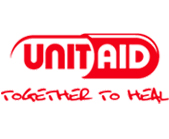
Over the last year, UNITAID has
committed a total of US$ 45 million
for second-line antiretroviral drugs
to fund the treatment of 65 000
patients by 2008.
One year on since its establishment, the international drug purchase facility – UNITAID – is celebrating a number of key achievements.
“In the year since it was established, UNITAID has managed to reduce the price of HIV treatments for children by almost 40%, and those for second-line antiretroviral (ARV) drugs by between 25% and 50%,” UNITAID reported.
“In collaboration with the Clinton Foundation, UNITAID has also delivered more than 33 000 paediatric treatments against AIDS and is on course to meet the needs of 100 000 children by the end of 2007.
”UNITAID was launched in September 2006 during the United Nations General Assembly. The mandate of UNITAID is to contribute to the scaling up of access to treatments for AIDS, malaria and tuberculosis in developing countries by leveraging quality drugs and diagnostics price reductions and accelerating the pace at which these are made available. UNITAID offers beneficiary countries long-term support through sustainable and predictable funding, mobilized by innovative financing mechanisms, such as a solidarity contribution on air tickets, together with multi-year predictable budgetary contributions.
Over the last year, UNITAID has committed a total of US$ 45 million for second-line antiretroviral drugs to fund the treatment of 65 000 patients by 2008. “Four countries (Botswana, Cameroon, Uganda and Zambia) have already received a first supply of second-line ARV drugs through UNITAID and a further 13 countries are currently awaiting delivery,” said UNITAID.
UNITAID is also contributing to the fight against tuberculosis together with the Global Drug Facility and the Stop TB Partnership. By the end of the year, UNITAID will have provided TB treatments to 150 000 children in 19 countries and will be supporting the provision of drugs for Multidrug - resistant TB in 17 low-income countries.
For each programme, UNITAID sets up an ad hoc partnership with existing organizations: World Health Organization, UNICEF, the Global Fund to Fight AIDS, Tuberculosis and Malaria, the Clinton Foundation, Global Drug Facility/Green Light Committee and the Stop TB Partnership.
”UNITAID is a prime example of the rapid, flexible and innovative action needed to develop a sustainable long-term response to AIDS and reach universal access to HIV prevention, treatment, care and support,” said UNAIDS Deputy Executive Director, Michel Sidibe. “In less than a year, UNITAID has shown that harmonization, simplification and coordination lead to less duplication and much more effective use of resources. It is a real model of ‘making the money work’ and scaling up of existing programmes for the benefit of the people who need it most.
Based in Geneva, the UNITAID Trust Fund and Secretariat are hosted by WHO. At present, 27 countries— of which 19 are in Africa— are members and contribute to UNITAID. At least 85% of UNITAID funds are spent in low income countries. The budget of UNITAID for 2007 is over US$ 300 million and 90% has already been committed to programmes in more than 80 countries.
Links:
Visit UNITAID's Web site
Related

Feature Story
Improving partnership and harmonization on AIDS
21 septembre 2007
21 septembre 2007 21 septembre 2007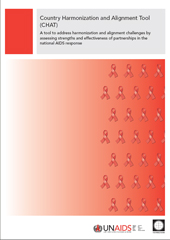
CHAT helps map stakeholders in
countries and assess the strengths
and weaknesses of their engagement
with the national AIDS response.
With increased funding and technical support resources available for AIDS, the need for coordinated, harmonized and aligned national AIDS responses has never been greater. To help countries ensure inclusive, participatory national responses to AIDS, UNAIDS with the World Bank has developed the ‘Country Harmonization and Alignment Tool' (CHAT) to help map stakeholders in countries and assess the strengths and weaknesses of their engagement with the national AIDS response. Team Leader in the Aid Effectiveness Division, Desmond Whyms, explains how the tool can help move AIDS responses forward and lead to positive action for change.
What is CHAT?
Many countries now face the challenge of having considerable amounts of money and technical support for AIDS available, but often lack strong coordination for those resources to ensure a common focus among the wide variety of national partners and international partners. CHAT aims to inspire a more inclusive national response through a survey process which first maps the various stakeholders involved in the national response and then through structured interviews with national and international partners establishes how well the national partners are engaged and how harmonized the international players are. This systematic information gathering and analysis helps to put together a picture at country level of the quality of the partnerships in the AIDS response, which then catalyses a dialogue on the strengths and weaknesses, and can help countries move forward in a more harmonized way.
How should countries use CHAT?
Every country’s AIDS coordinating authority should be doing a regular review of progress and performance, and the CHAT is designed to be a part of that process. It is also possible to use CHAT as a free standing tool if a country wants to have a more immediate overview of the quality of the national and international engagement in the national AIDS plan.
What are the necessary steps to put the tool into practice?
CHAT has been piloted in several countries in 2006. In many of the pilot countries, the administration and analysis has been done by a consultant, on behalf of the national AIDS authority. It is designed as a light process that is not burdensome for staff in the national AIDS authority. The consultant administers the appropriate questionnaires—one for national and one for international partners, and then collates and analyses the data to produce a draft report. The CHAT contains guidance on how to do this.
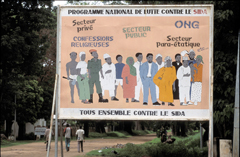
CHAT covers the range of areas in which the
national and international partners should be
engaged with the AIDS response at the country
level.
Can you give an example of some of the areas covered in the questionnaire?
CHAT covers the range of areas in which the national and international partners should be engaged with the AIDS response at the country level like strategy development, resource allocation, administration and monitoring procedures. The questions are based on what is best practice and what’s been promised by international institutions’ headquarters, following their commitments to the Paris Declaration, the Three Ones and the Global Task Team for example. By the very fact of starting to ask these questions at the country level we are starting to put pressure to move in this direction, and that we need to improve the way we work and the way we are engaging to achieve results.
The questionnaires are in the format of self reporting, for example: does your organization participate in decision making about the allocation of resources within the national AIDS budget? For many of the national partners we’ve contacted in the pilot countries, this is the first time anyone had ever really asked them these questions. The feedback has been that this exercise is empowering as all voices are being listened to.
What happens at the end of the questionnaire and analysis?
The output is an analytical report which is intended to feed into the discussions in the context of the joint AIDS review. Most of the international community has already signed up to the principles of good practice and the challenge of the CHAT is to see if those principles are being applied in a particular country to the AIDS response. This is the only tool that exists that allows us to explore this, the intention being that it will flag areas for improvement that can then be addressed through the AIDS review at national level. We can also bring the findings back to headquarters for a comparative analysis, and look at the patterns across the regions.
What are the benefits for the countries?
Most people know the quantity of the response within countries and they should know how much money is being brought by the different partners but what is less known is how well it is all adding up together and pulling in the same direction. This is a low-maintenance tool that really allows countries to start taking stock of the quality of the AIDS response in their countries in terms of harmonization and alignment between national and international partners. It will help us start making sure that we really are “making the money work” and moving towards Universal Access.
Links:
Download the Country Harmonization and Alignment Tool (CHAT) ( en | fr | es | ru )
Download flyer ( en | fr | es | ru )
Download template ( en | fr | es )
Read more about the Three Ones

